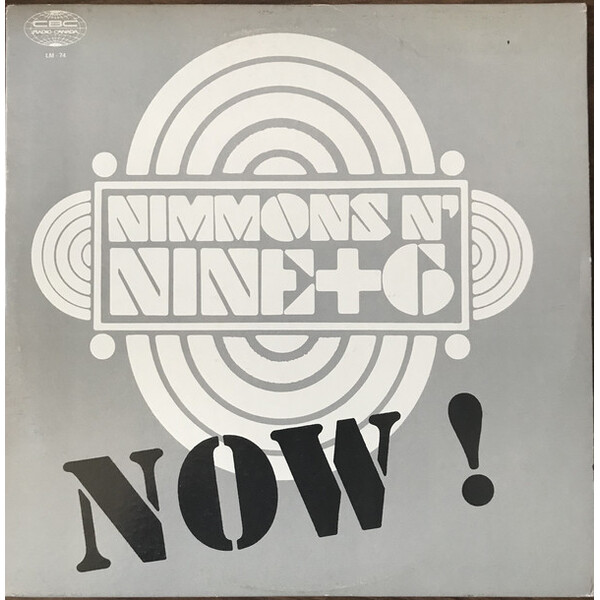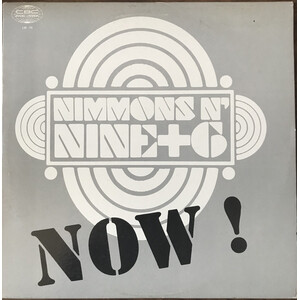Information/Write-up
Clarinet-playing bandleader Phil Nimmons was the dean of Canadian jazz
Brad Wheeler, Globe and Mail, April 18, 2024
On Oct. 6, 2010, at age 87, jazz clarinetist Phil Nimmons performed a concert of improvised music with pianist David Braid at Petro-Canada Hall in St. John’s. The finale, Falling Through, combined a swan song’s melancholy with an air of graceful summation.
“All of Phil’s personality, his gentle side, his fierce side, his mischievous side, it all seemed to manifest in a beautiful way in that particular piece,” Mr. Braid said. “After we played it, I had this deep feeling that when his inevitable time came, this improvisation was for that time. It’s a way to reflect on a legacy without having to explain with words.”
Mr. Nimmons, a composer and musician who as an educator inexhaustibly influenced generations of Canadian jazz artists, continued to perform until 2019. He died of natural causes at home in Thornhill, Ont., on April 5. He was 100 years old.
Mr. Nimmons’s century was significant. “If not the father of modern jazz in Canada, he was at least a father figure to it,” jazz historian Mark Miller wrote in The Miller Companion to Jazz in Canada.
The native British Columbian was born at the dawn of the jazz age. His boyhood training on the clarinet consisted of two lessons from a Vancouver tugboat captain. The mariner was a patient of Mr. Nimmons’s father, a dentist who accepted the instruction as payment for molar work.
He later studied at the Juilliard School of Music in New York in the mid-1940s – a young Leonard Bernstein had recommended him – and later at the Royal Conservatory of Music in Toronto. In the early 1960s, he and the iconic jazz pianist Oscar Peterson and bassist Ray Brown were founding instructors at the ambitious but short-lived Advanced School of Contemporary Music in Toronto.
Mr. Nimmons would go on to establish a jazz program at the Banff Centre for Arts and Creativity and at a stuffy big-city institution. “He was passionate and strong-willed, and he brought jazz to the University of Toronto kicking and screaming,” saxophonist Mike Murley said. “You could hear him practising in his office there, even when he was in his 80s.”
As a bandleader, he established the big bands Nimmons ‘n’ Nine and the expanded Nimmons ‘N’ Nine Plus Six, fixtures on CBC Radio. The 16-piece unit appeared on a 1973 CBC broadcast recording of his orchestration of Mr. Peterson’s iconic Canadiana Suite, with the composer himself on piano.
Mr. Nimmons recorded more than a dozen albums, beginning with The Canadian Scene Via the Phil Nimmons Group, released on the illustrious Verve label in 1956. The Nimmons ‘n’ Nine Plus Six recording of The Atlantic Suite, his masterwork on Toronto-based Sackville Records, won the first ever Juno Award for best jazz album, in 1977.
Open this photo in gallery:
Mr. Nimmons recorded more than a dozen albums, beginning with The Canadian Scene Via the Phil Nimmons Group, released in 1956. A composer, musician and educator inexhaustibly influenced generations of Canadian jazz artists, he continued to perform until 2019.The Globe and Mail
His late-career collaboration with the much younger Mr. Braid began with the 2004 concert album Beginnings: Nimmons’n’Braid. Mr. Nimmons was in his ninth decade on the planet. The extemporaneous music was a rebirth for the musician and a revelation to his listeners.
“I had heard Phil play his own tunes, and I heard him play on standards, but to hear him improvise was fascinating,” said jazz vocalist and radio broadcaster Heather Bambrick, who studied under Mr. Nimmons in the early 1990s at the Interprovincial Music Camp, near Parry Sound, Ont. “That’s where the imagination and the creativity came to the forefront, and that was something Phil had in abundance.”
He also had an abundance of honours, the highest being the Governor-General’s Performing Arts Award for Lifetime Artistic Achievement and his appointment as an officer of the Order of Canada.
If others referred to him as the “dean of Canadian jazz,” Mr. Nimmons saw himself as a “people person,” according to a 2001 Globe and Mail profile. “I remember my dad had one of those plaques that was supposed to look like parchment up on the wall of his office,” Mr. Nimmons said. “I don’t recall it word for word, but it was something like: ’It behooves the best of us to know the best of somebody else.’ “
Warm, humble and genuinely interested in the men and women he encountered, Mr. Nimmons not only took names, he kept them. “He had an incredible memory,” Ms. Bambrick said. “He was impish and wise and gentle and generous with advice – a true educator.”
In 1972, Paul Mills was a folk-singing jazz neophyte hired to be the jazz producer at CBC Radio. That the young producer didn’t know Duke Ellington from beef wellington did not faze Mr. Nimmons one bit. “Most people would ask, ’Why would CBC employ you?’, but Phil didn’t do that,” Mr. Mills recalled. “He took me under his wing, and I learned a lot very quickly.”
Despite all his accomplishments and accolades, a 77-year-old Mr. Nimmons confided to The Globe in 2001 that he still had not reached his potential on the clarinet.
“I have this feeling that I haven’t played it the way I want to yet,” he said. “I haven’t done with it what I want to do.”
Three years later, the reed-blowing octogenarian embarked on his duo adventure with Mr. Braid. They recorded two live albums and gave hundreds of concerts together, travelling the country by planes, trains and automobiles. “It was joyful and easy,” Mr. Braid said. “He did not like airport security, though. He disagreed with it philosophically.”
Mr. Nimmons last performed publicly in 2019, at age 96. Reflecting on his career and his own abilities as a clarinetist, he wasn’t certain which style best represented his talent.
“Sometimes I have nights when I think I’m really swinging, the way Zoot Sims used to swing, and I dig that,” Mr. Nimmons said. “Other nights, I’m all over the place, and I dig that, too. But it’s so different. Maybe I should stop saying: ‘This is the way I play best.’ Maybe I should just play, and whatever comes out, comes out.”
Phillip Rista Nimmons came out into this world on June 3, 1923, in Kamloops. He was the first of two children born to Hilda Nimmons (née McCrum) and George Nimmons. His father was a dentist and violinist who worked the movie-house orchestra pits. His homemaker mother was a joyous soul who loved to dance and was an amateur pianist enthused with the popular ragtime style of the day. “If you played a rag, my mother would start to dance right away,” Mr. Nimmons once recalled.
In 1930, his father moved the family to Vancouver to set up a dentistry practice. Part of a musical household that included an older stepsister, young Phil took piano lessons as a child from a nun. How he came to the clarinet is under some dispute.
The conventional story is that a Benny Goodman broadcast inspired him to take up the instrument, and that he sold Liberty magazines to save up for his half of the price of the jaunty woodwind. His father matched the amount. But, according to Mr. Braid, Mr. Nimmons claimed he had wanted to be a trumpet player, à la Harry James, and only pursued the clarinet because the local music store was out of trumpets at the time. Either way, by design or by improvisation, the 12-year-old came home with a Rampone model clarinet.
“To be honest,” Mr. Braid said, “I like both stories.”
Leading his first small band as a teenager in the Point Grey neighbourhood of Vancouver, Mr. Nimmons transcribed melodies for the group from 78 rpm recordings of the Count Basie Orchestra, the Benny Goodman Orchestra and Tommy Dorsey’s band. Later, with the city drained of musicians because of the Second World War, he found work downtown in dance bands.
His father wanted him to be a doctor. Acquiescing, he submitted to his dad’s dream (by studying premed at the University of British Columbia) and pursued his own dream, too. He performed with (and wrote arrangements for) the CBC Vancouver Chamber Orchestra and the Ray Norris Quintet.
After studying clarinet performance at Juilliard on a scholarship and a $100-per-month stipend, Mr. Nimmons, in 1948, entered the Senior School at the Royal Conservatory of Music in Toronto. He studied composition under Arnold Walter and harmony with Richard Johnston. He also reunited with Ray Norris, who had headed east.
Mr. Nimmons’s harmonic successes extended into his personal life at the Conservatory, where he met Noreen Spencer, a piano student and his future wife of 52 years. “My father credited a lot of his success to her,” Holly Nimmons said, “and often said she was the better musician.”
(Noreen Nimmons, who enrolled in university for the first time in her 50s and who was awarded a PhD in sociology from York University at the age of 60, died in 2002.)
Around the same time as the wedding, another excellent partnership was forged when composer Harry Freedman took Mr. Nimmons to see Mr. Peterson perform at a Toronto club and later introduced the two. They became friends and, later, educator-colleagues.
Whether in Vancouver or in Toronto, Mr. Nimmons had an enduring CBC association. He composed everything from incidental music for the radio drama series Anthology to overtures for Norman Jewison musicals. He orchestrated Norman Campbell’s music for the 1956 television film Anne of Green Gables.
“He always said his real musical education was when he was working at the CBC, week after week, writing dramatic music,” Mr. Braid said. “It fostered an attitude of learning by doing, which, I believe, later influenced his teaching style.”
In 1953, the Phil Nimmons Group was formed for “kicks,” according to its founder. The band made its public debut at the Stratford Festival in 1956 and, upon the recommendation of Mr. Peterson, signed to the Verve label. By 1957, the band was called Nimmons ‘n’ Nine. The name of the enlarged Nimmons ‘n’ Nine Plus Six in 1965 was whimsically supplied by the well-known CBC broadcaster Bruce Marsh.
The beginnings of Mr. Nimmons’s instructional endeavours can be traced to the basement of Mr. Peterson’s house in Scarborough, outside Toronto, in 1959. “We took pupils and taught them how to improvise, how to think, how to be jazz artists,” Mr. Nimmons later told The Globe.
That eight-student experiment led to the Advanced School of Contemporary Music, on Toronto’s Park Road. The school, which took in American jazz aspirants including Willie Ruff, closed in 1963. It was there Mr. Nimmons acquired his belief that music should be studied as a passion, not as a vocation.
“In some ways, the kids I see coming along today are very different than what I was,” he told The Globe’s Jack Batten in 1976. “Now youngsters come up to me and ask flat out: ‘How do I make a buck in this business?’ That’s not my idea at all. I’m trying to make them artists. Let the dollars take care of themselves.”
The Noreen and Phil Nimmons Entrance Scholarship in Jazz Performance was established in 2004 at the University of Toronto. The Canadian Music Centre has set up the Phil Nimmons Legacy Fund to support the continuation of his dedication to future generations of artists.
Mr. Nimmons leaves his children, Holly Nimmons, Carey Nimmons and Spencer Nimmons; six grandchildren and one great-grandchild.
Rhythm Section: Ed Bickert, Murray Laude, Ron Rully
Saxophone: Alvin Paul, Jack Taylor, Phil Nimmons, Rick Wilkins
Trombone: Butch Watanabe, Rob McConnell, Ron Huges, Ted Roderman
Trumpet: Arnie Chycoski, Bobby Day, Erich Traugott, Fred Stone
Engineered by Ian Jacobson
Produced by Dave Bird




No Comments